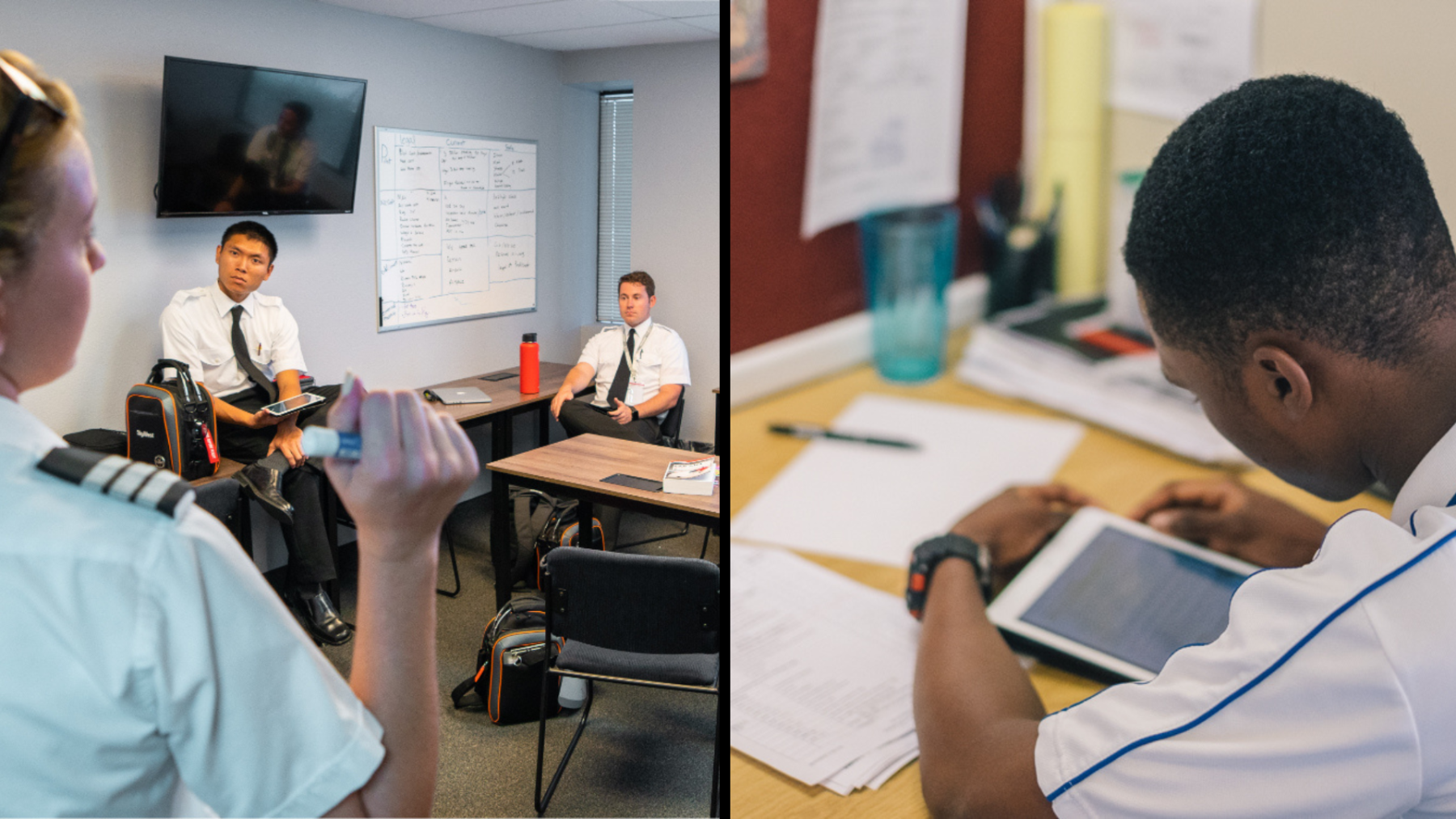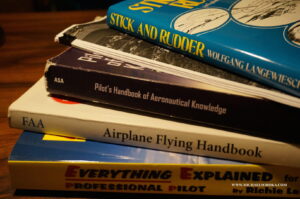Online Ground School vs In Person – How To Decide?

As the aviation industry evolves, so do the methods by which pilots prepare for their journeys.
The debate between traditional ground schools and online platforms is not merely about convenience; it’s a reflection of the changing dynamics in aviation education.
With the proliferation of digital tools and resources, the question arises: Can online training truly replicate the depth and experience of in-person instruction?
In this exploration, we will delve into the intricacies, advantages, and challenges of both methods, drawing insights from seasoned aviators and industry experts.
The Changing Landscape of Flight Training
The aviation industry has always been synonymous with innovation. From the pioneering flights of the Wright brothers to the advanced simulators of today, there has been a continuous drive for improvement.
Recently, the digital revolution has significantly impacted flight training. Traditional classrooms, once the primary source of knowledge, are now complemented by online platforms offering a plethora of resources.
This shift is not just about adapting to new technologies; it’s about reimagining the way we approach aviation education.
Advantages of Online Ground School
Due to their flexibility, online ground schools have rapidly gained popularity as an alternative to traditional training methods, especially for those debating between the sport pilot vs private pilot routes.
Aspiring pilots can access a wide range of resources at their convenience, eliminating geographical and time constraints.
Financially, online platforms often present a more economical option, reducing associated costs such as travel and materials. Furthermore, the digital format allows for the integration of multimedia content, enhancing the learning experience.
For instance, interactive simulations can provide a deeper understanding of complex concepts.
While these benefits are evident, it’s essential to consider the potential limitations of online training and how it compares to the immersive experience of in-person sessions.
The Traditional In-Person Ground School Experience
Traditional ground schools offer a unique learning environment that’s hard to replicate. The tactile experience of handling equipment, the immediate instructor feedback, and the camaraderie among peers contribute to a holistic learning journey.
Structured schedules, while seemingly rigid, provide a consistent learning pace, ensuring comprehensive curriculum coverage. For those looking to dive deeper into this subject, exploring resources like how to prepare for ground school can offer valuable insights into making the most of these traditional methods.
An interesting fact to note is that the sound of a jet engine can reach up to 140 decibels, emphasizing the immersive sensory experience of in-person training.
While traditional methods offer these advantages, they also come with challenges like higher costs and location constraints. Balancing these factors is crucial when choosing the right training method.
The Middle Ground: Self-Study
Is self-study in aviation the equivalent of a pilot’s first solo flight? The sensation is both exhilarating and demanding. This approach bestows unmatched flexibility, allowing learners to set their own rhythm and focus on areas that intrigue them most.
Financially speaking, self-study emerges as a cost-effective choice, primarily requiring just the fundamental materials. However, this path is full of challenges.
Without a structured guidance system, there’s potential for knowledge gaps. The presence of an instructor can often simplify the grasp of intricate concepts.
To thrive in this method, deep-seated motivation and a well-defined plan of action are essential.
Online vs In Person Cost
When evaluating flight training methods, financial implications play a pivotal role. Traditional ground schools, while comprehensive, often come with a hefty price tag, factoring in course fees, travel, and accommodation.
Online platforms, on the other hand, typically offer a more economical upfront cost. However, there might be additional expenses for premium content or advanced simulations.
Self-study is the most wallet-friendly, primarily requiring books and basic resources. Yet, one must consider potential hidden costs, such as supplementary materials or last-minute courses to fill knowledge gaps.
Effectiveness in Learning and Retention
The effectiveness of a training method is gauged by how well it caters to diverse learning styles.
Online courses, enriched with multimedia, cater to visual and auditory learners, enhancing retention and engagement.
Traditional settings, with face-to-face interactions, offer tactile experiences and immediate feedback, which are invaluable for kinesthetic learners.
While online platforms boast interactive content, the depth and immediacy of in-person interactions in traditional settings are unparalleled.
It’s essential to align the chosen method with one’s learning style for optimal retention.
Preparing for the FAA Written Exam
The FAA written exam is a significant milestone for every pilot. Ground school, irrespective of the method, lays the foundation for this test.
Traditional schools often have structured revision sessions and mock tests. Online platforms offer extensive question banks and timed simulations.
Self-study demands a meticulous approach, with learners sourcing their practice materials.
Regardless of the approach, thorough preparation and consistent revision are paramount for success.
What to Look for in a Ground School (Online or In-Person)
Choosing a ground school is a decision that shapes a pilot’s foundational knowledge. Key considerations include the depth and breadth of course content and the ability to customize it to one’s needs.
The accessibility of instructors and their responsiveness can significantly impact the learning experience. A diverse array of study materials, from videos to audio lessons, caters to different learning styles.
Additionally, the technological infrastructure of the school, such as simulation tools and onlinae platforms, can enhance hands-on training and virtual learning experiences.
The school’s affiliation with aviation bodies and its accreditation status can also play a pivotal role in ensuring quality education.
Lastly, reviews and feedback from past students provide invaluable insights into the school’s effectiveness and reputation.
At the same time, alum success stories can serve as a testament to the institution’s credibility in the aviation industry.
Online Ground School vs In Person Conclusion
The journey of flight training is as intricate and varied as the skies themselves.
Whether one opts for the traditional ambiance of in-person schools, the digital realm of online platforms, or the self-directed path of self-study, the goal remains constant: to soar.
Each method has its merits and challenges, and the choice ultimately hinges on individual preferences, learning styles, and financial considerations.
As the world of aviation training continues to evolve, prospective pilots are encouraged to chart their course with diligence, ensuring their chosen path aligns with their aspirations and needs.







